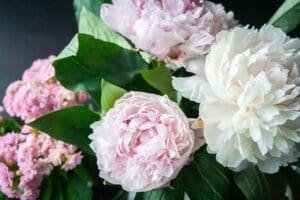Today is Memorial Day, and as promised, I am posting a special blog today. But it would not be right for me to post about poppies without including that famous poem by John McCrae.

“In Flanders Fields” by John McCrae
In Flanders fields the poppies blow
Between the crosses, row on row,
That mark our place; and in the sky
The larks, still bravely singing, fly
Scarce heard amid the guns below.
We are the Dead. Short days ago
We lived, felt dawn, saw sunset glow,
Loved and were loved, and now we lie
In Flanders fields.
Take up our quarrel with the foe:
To you from failing hands we throw
The torch; be yours to hold it high.
If ye break faith with us who die
We shall not sleep, though poppies grow
In Flanders fields.
Here’s an interesting article that tells about the history and symbolism. Now, let’s go on to see some interesting facts about this symbolic flower.
There are Many Poppy Species
Chances are that you are familiar with the red poppies that veterans often will give out on Memorial Day. But there are actually over 70 poppy species, in many colors and shapes. The poppy’s versatility is one of the strengths that the flower has and a big reason that it’s in so many gardens.
There was a Poppy That was Grey
Thanks to gardener and artist Sir Cedric Morris and his journey through Suffolk’s countryside, there was a range of poppies with a sheen that was smoky grey in their petals.
Yes, Poppies Come From Those Same Seeds on Your Bagel
These seeds have a lot of minerals in them, along with iron and calcium. These come mostly from P. somniferum, the opioid poppy. However, these types of seeds are banned in Singapore, China and Taiwan due to their ability to grow the opium poppies. Even the foods that contain them isn’t allowed, although ripe seeds’ narcotic properties is negligible.
The next time you see one of those red flowers or have baked goods with poppy seeds on them, remember these facts about poppies and their symbolism for the men and women who gave thier lives.



